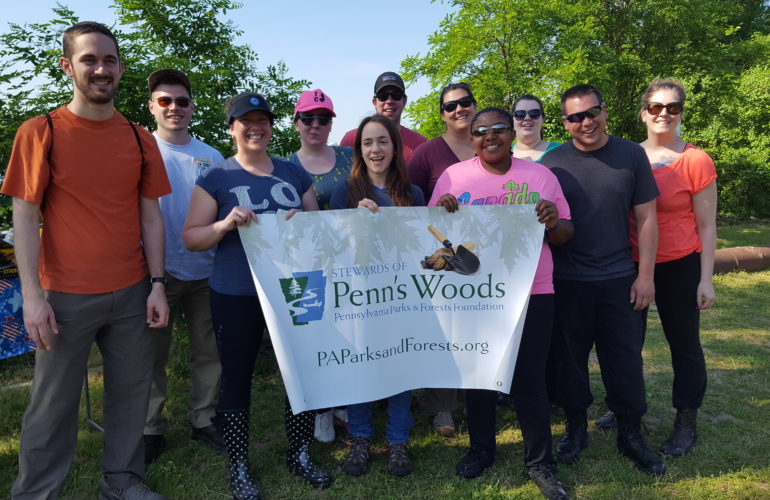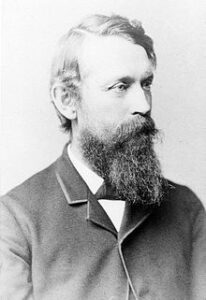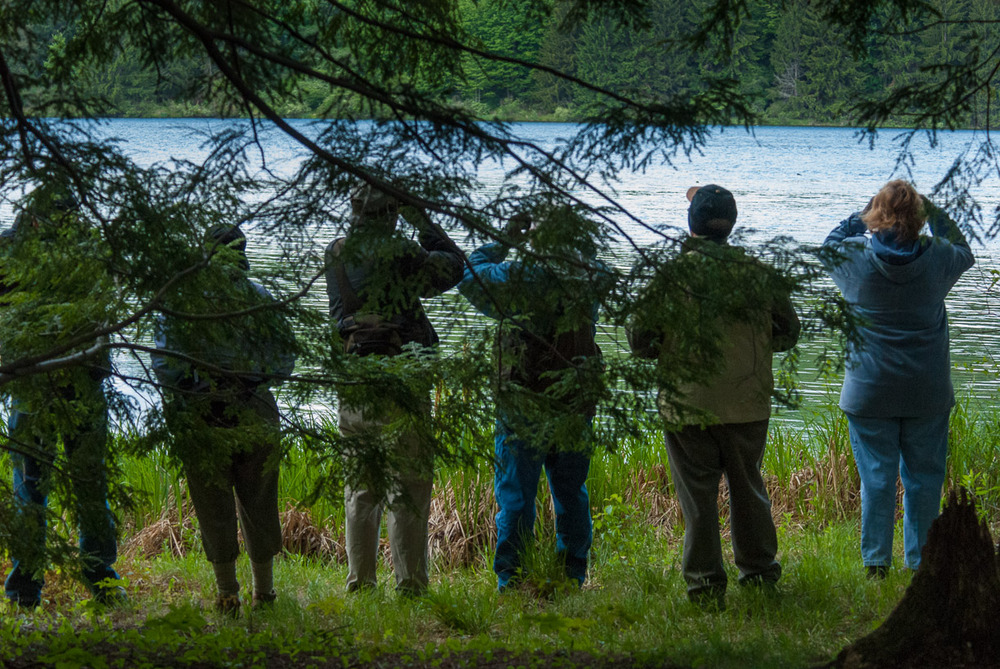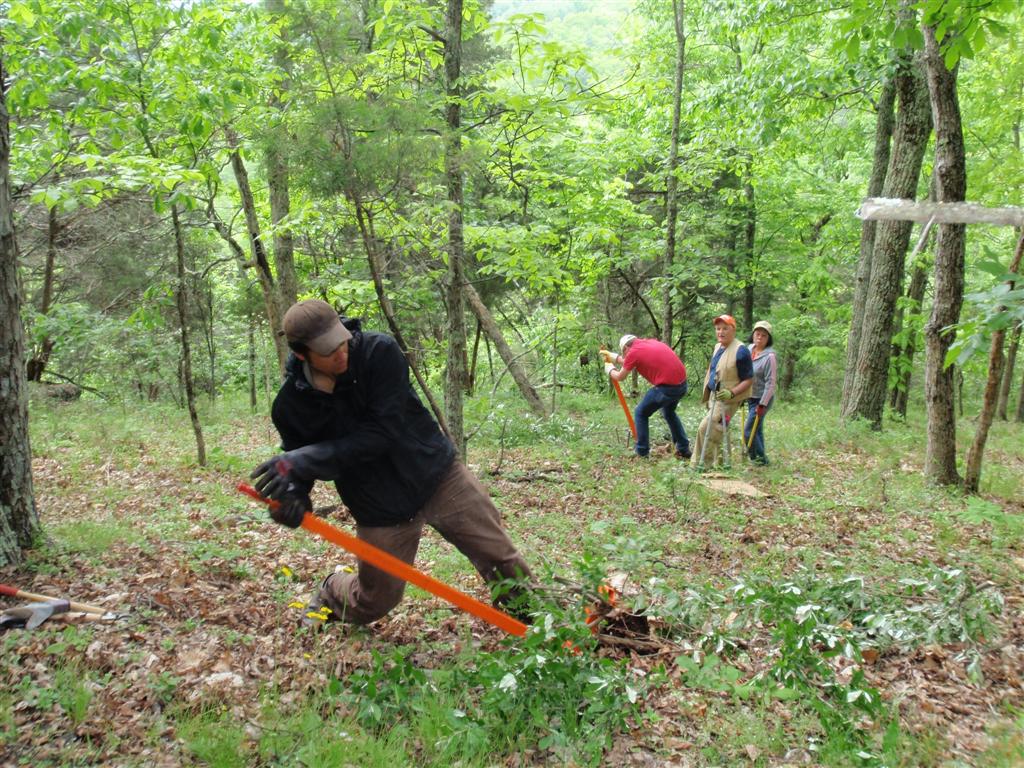
Looking back at the role of citizen groups in Pennsylvania’s history of conservation and protection of public lands, we thank Margaret Mead for her astute observation that we should:
“Never doubt that a small group of thoughtful, committed citizens can change the world; indeed, it’s the only thing that ever has.”
We’ve written about the connection between human impacts on our natural environment and public health. We focused on shifts in public policy and milestones in legislative actions. At the heart of these efforts, there were always individuals and their like-minded friends and colleagues who formed groups, lighting the spark and inspiring action.
Our state is a different world than the one William Penn found on his arrival. In 1681, Pennsylvania’s rich forests and abundant rainfall supported 83,000 miles of rivers and streams. The forests, waters, and meadows were home to a wide variety of plants, insects, and animals. As Pennsylvania’s industrial economy and its communities grew, the devastating changes that accompanied that growth motivated an interest in preserving the state’s natural beauty and resources.
In the paragraphs below, we barely scratch the surface of the Pennsylvania conservation movement. At any given time at any point in history-the movement is active at the local, county, regional, state, national, and international levels. Our goal is to inspire you to understand the important role we all play in the conservation of our natural resources.
Activism – A New Growth Industry
In the nineteenth and early twentieth centuries Pennsylvanians cut, mined, quarried, hunted, fished, and harvested with increasing voracity. Polluted air and waterways, denuded forests, impoverished soils, and extinct and disappearing plant and animal life motivated citizens to embrace an interest in conservation that they hoped would restore the state’s environmental health.
The Pennsylvania Forestry Association
No discussion of the birth of Pennsylvania’s citizen conservation groups could start without Joseph Trimble Rothrock, the commonwealth’s “Father of Forestry.” Born in Mifflin County, he was often ill as a child and spent many hours hiking the woods of Mifflin County for exercise to combat his weakened health. It was while on these walks that Rothrock developed a love for the outdoors. He went on to become a pioneering environmentalist in Pennsylvania, helping preserve and re-establish the forests that he loved.

Joseph T Rothrock
In describing the forest conditions of 1915 he said, “6,400 square miles; more than 4 million acres of the state are desolated, cut and unprotected from fire.” He compared Pennsylvania’s forests to similar forest destruction in China. He worried that “unless we reforest, Pennsylvania’s highlands will wash into the oceans.”
In July of 1886, Dr. Rothrock and 50 others joined together to form the Pennsylvania Forestry Association (PFA). Their goal was to promote conservation and support the creation of state forests in Pennsylvania.
Their first order of business was to formalize their intentions. Their mission was to “secure and maintain a due proportion of forest area throughout the State; to disseminate information concerning the growth, protection, and utilization of forests; to show the great evils resulting from forest destruction, in the decrease and unequal distribution of the available water supplies, the impoverishment of the soil, the injury to various industries, and the change in climate; to secure the enactment by the Legislature of such laws, and the enforcement of the same, as shell, tend to increase and preserve the forests of the State.” They encouraged membership by inviting “every progressive or public-spirited man or woman in the community” to join them in their efforts
The Audubon Society
John James Audubon lived in Mill Grove near Valley Forge when he developed his spectacular and unique painting style. He embraced the philosophy that we borrow the world from our children.
The Audubon Society grew out of citizen outrage over the slaughter of birds for the millinery trade in 1896. Founding Mothers Harriet Lawrence Hemenway and Minna Hall of Massachusetts persuaded ladies of fashion to forgo the cruelly harvested plumage that adorned hats. This led to the passage of laws to protect birds. Their work quickly spread, with Pennsylvania forming the second state Audubon Society.
Audubon spearheads one of the largest citizen science movements in the world, with the 115-year-old Christmas Bird Count. The count provides scientists with data to follow critical bird population trends.

Birders – taken by Sam McCaughey
Izaak Walton League
Birds exist in an ecosystem, and the demise of bird populations threaten critical habitat that also supports human life. While Audubon Societies spoke for the birds, the Izaak Walton League stepped up to speak for the fish and water quality. Walton’s famous treatise on fishing, The Compleat Angler, is still considered a celebration of conservation ideals and the art and spirit of fishing. He wrote: “Rivers and the inhabitants of the watery element are made for wise men to contemplate, and for fools to pass by without consideration.”
“It is a Club for All” – The Alpine Club
In the spring of 1915, Pennsylvania Forestry Commission member Colonel Henry W. Shoemaker and two journalist friends were traveling to interview an elderly hunter in Snyder County to hear the story of the last bison hunt in Pennsylvania. Passing Mahoney Mountain in the distance, they agreed that it would be “a fine thing” to have an organization that focused on exploring and climbing Pennsylvania’s higher peaks to study the flora and fauna – and ultimately cultivate a wider public interest in conservation.
The Alpine Club was born with a mission “to preserve the vanishing wildlife, the birds and the animals, as well as the purity of the streams which flow from these mountains, and above all, to use every effort to prevent forest fires.”With neither dues nor fees, the club was open to all.
The group had an active voice on such issues as abolishing the use of poison in forests to control crows and predatory animals since the practice impacts all species. They collected data on stream flow, pollution impacts, and fish conservation.
A Mighty Wind from the West
Three years into the Great Depression, ten Pittsburgh citizens came together to form the Greater Pittsburgh Parks Association, a non-profit conservation organization to alleviate widespread unemployment through public works programs that would also create a positive impact on the region’s natural resources. Their first project was a modest landscaping project along a park on Bigelow Boulevard.
Out of this small group of committed citizens grew the present day, 11,000+ strong Western Pennsylvania Conservancy (WPC). As their membership grew, they continued to expand their goals to include land acquisition, public policy, science, and research, and community gardening.
To date, the Western Pennsylvania Conservancy has protected more than 250,000 acres of land, helped to establish ten state parks, and protected or restored more than 3,000 miles of rivers and streams. WPC also supports 135 community gardens and greenspaces that are planted with the help of 13,000 volunteers.

Western PA Conservancy
Statewide, more than 400,000 acres of land in Pennsylvania are protected through land trusts and easement acquisitions, by national organizations such as the Conservation Fund to local conservancies such as Natural Lands Trust and the North Central Pennsylvania Conservancy.
“As Sunshine Flows into Trees” – Pennsylvania Sierra Club
“Climb the mountains and get their good tidings. Nature’s peace will flow into you as sunshine flows into trees.” ~ John Muir
As early as 1889, Journalist Robert Underwood Johnson encouraged John Muir to form an “association” to help protect the Sierra Nevada. The Sierra Club’s first goals included establishing Glacier and Mount Rainier national parks, convincing the California legislature to give Yosemite Valley to the US federal government, and saving California’s coastal redwoods.
The Sierra Club is now one of the nation’s largest grassroots environmental organizations. The Pennsylvania Chapter was organized in the early 1970s to explore, enjoy, and protect the wild places of the earth; to practice and promote the responsible use of the earth’s ecosystems and resources; to educate and enlist humanity to protect and restore the quality of the natural human environment; and to use all lawful means to carry out these objectives.
The Pennsylvania Federation of Sportsmen’s Clubs
The Pennsylvania Federation of Sportsmen’s Clubs (PFSC) is one of the oldest and largest sportsmen’s organizations in Pennsylvania. PFSC was established in 1932 with a meeting of five Pennsylvania conservationists: Ross L. Leffler, John M. Phillips, Judge Grover C. Ladner, Colin Reed, and John Youngman.
From the beginning, the Federation was concerned with environmental issues and how sportsmen could help. Theirs was an important voice in passing Pennsylvania’s Clean Streams Act in 1937. They spearheaded efforts in game land acquisition and worked to improve fish and game laws.
After World War II, Pennsylvanians returned home and found many of their favorite hunting and fishing areas devastated by heavy strip mining as coal was used to support the war effort. Beginning with the Bituminous Open Pit mining act in 1963, their conservation efforts continued with the support of legislation to improve and restore Pennsylvania. They were instrumental in the establishment of Soil and Conservation Districts, and the founding of the National Wildlife Federation.
To join their group, one makes this Conservation Pledge:
“I give my pledge as an American to save and faithfully defend from waste the natural resources of my country – its soil, air, minerals, forests, water and wildlife.”
PPFF
The Pennsylvania Parks and Forests Foundation is new to the conservation scene, a mere teenager on the timeline of conservation history. Called for in the State Park 2000 report, we formed in 1999 as a way for users and visitors to Pennsylvania’s state parks and forests to give back to these resources. We aspire to be meaningful participants in Pennsylvania’s rich heritage of conservation. History is made day by day and we plan to be a part of it.
Be the Change…
These are just a few examples of groups that were conceived in an environmental landscape different than the one we live in today. From small citizen groups that form to speak out to reduce lead poisoning or develop community gardens, to the multi-national groups with Pennsylvania chapters, throughout history our citizens made inroads towards preservation and better conservation policies. If you want clean air and water, thriving forests, fertile soils, and protection of endangered plant and animal life – learn about your conservation heritage and then choose to be part of that “small group of thoughtful, committed citizens (who) can change the world!”
We can’t possibly list all organizations in which you might become involved. A quick internet search on the issues important to you will produce opportunities for you to review. If a group doesn’t exist, start your own!
Check out The Conservation Heritage’s projects mini-documentaries that inspire citizen engagement through stories about the lives of Pennsylvania conservationists. Click here to watch a mini-documentary today.




